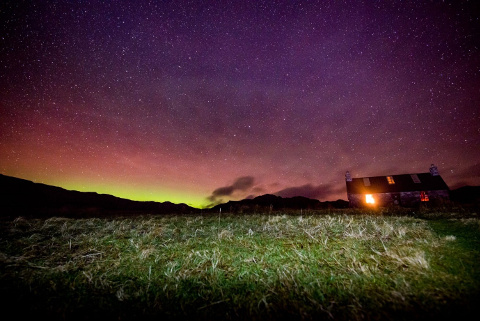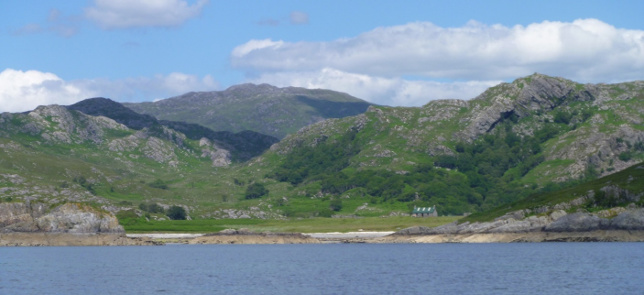Peanmeanach bothy - back to basics

A few days at the Peanmeanach Bothy more than repays the effort needed to reach it - a two hour trek, carrying your food and provisions across the remote Ardnish Peninsula until encountering its spectacular setting, shared with an abandoned village and nestled by the sea. So park your car at the lay-by, don your climbing boots and wet weather gear and disconnect from the virtual world.
During your stay you will soak up the history and atmosphere all around you in this isolated and picturesque spot. Within a few hours you will start to reconnect with nature, rapidly adapting to life without Wi-Fi, electricity or running water; savouring instead the bothy’s panoramic views, remote sandy beaches and the deer that, from a safe distance, watch your every move. Acclimatising to a slower pace - perhaps pottering along the coastline or exploring the other abandoned villages - you will appreciate the simpler things in life and gradually start to re-charge your own internal batteries. Peanmeanach Bothy has a wood-burning stove, magnificent views across the bay during the day, and if skies are cloudless, fabulous views of the stars in the evening.
Step Back in Time
Peanmeanach Bothy was built circa 1905, originally as the schoolmistress’ house - the school was around the bay at Glasnacardoch. Peanmeanach was then a thriving township with a population of around 50. The roll call at the school was once as high as 28, as it catered for the children of several other villages on the Ardnish peninsular, all of which are now also abandoned.
The Post Office was subsequently relocated to the building that is now the bothy. The school was vacated in 1932, and with no need for a schoolmistress, her house became a croft once again. It was deserted in 1943 when the isolation and the rationing of paraffin (half a gallon per week for both cooking and lamps) and candles (one per week) eventually took their toll. Long winter evenings, with little light aside from the flicker of flames in the hearth, seem to have been the final straw. It was used as a cow byre for 20 years until the roof collapsed, it was patched up in the 1960's but again fell into disrepair. It was then renovated by the Mountain Bothy Association and run as an open access bothy from the late 1970s until 2020. From 2021 it will be run on a not-for-profit basis as a bookable, keyed bothy.
Even the name Peanmeanach is steeped in history. With Norse roots, it is a hangover from the Viking system of land rents. Peanmeanach is a derivation of the Norse for Pennyland (Pean) and Meadhonach is Gaelic for intermediate or middling. Peanmeanach therefore means the ‘middle land’ which would pay one penny per year in rent. Some pennylands were subdivided into smaller areas, farthinglands, which paid a quarter of a penny per year in rent.
The Norse word for farthing is a feorlig. Feorlindhu (black farthingland) is a collection of houses west of Peanmeanach. Apart from naming villages, the Vikings also left behind a Naust (boathouse) in front of the bothy, which is still clearly visible and is where Viking longboats would have been overwintered or repaired.

It has a wood-burning stove, magnificent views across the bay during the day, and on a cloudless night, fabulous views of the stars.